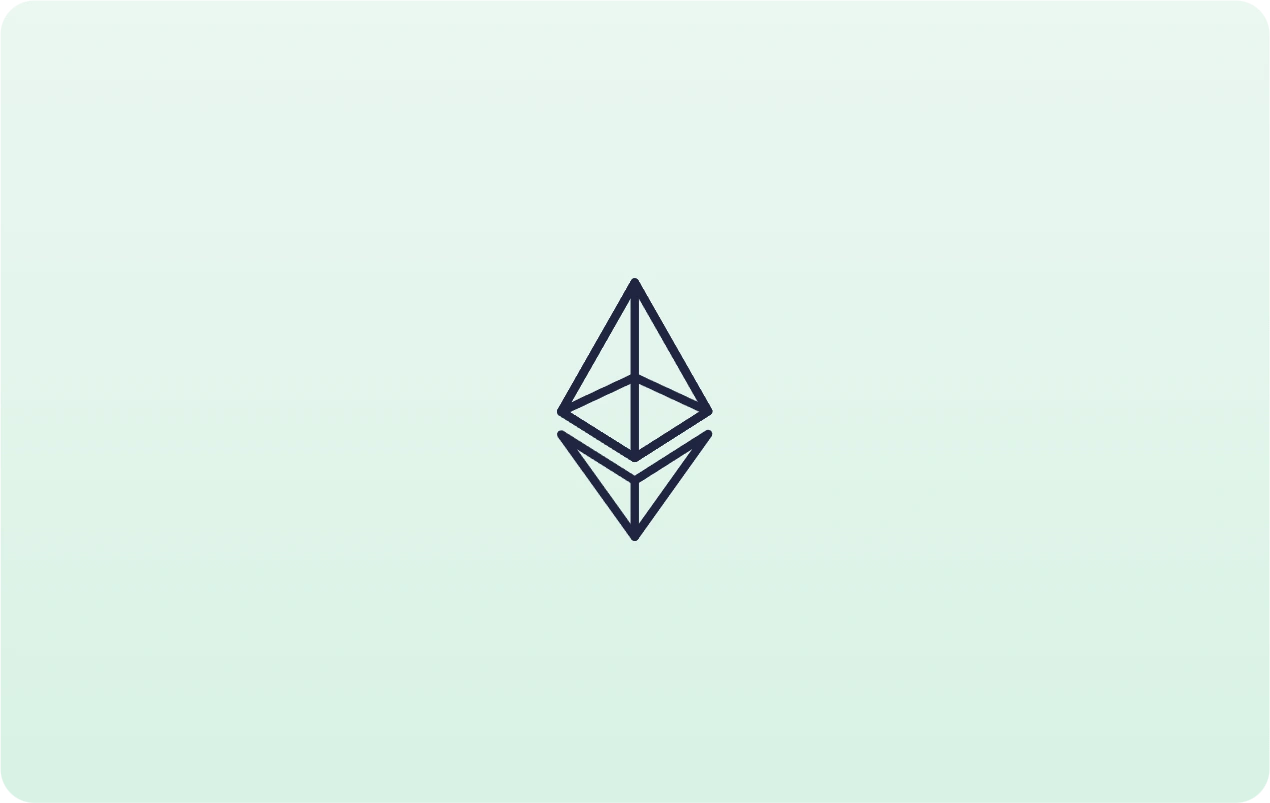Wallet characteristics, access for institutions, and more!
Liminal X Ethereum offers an extremely flexible platform on which to build decentralized applications using the native Solidity scripting language and Ethereum Virtual Machine. Decentralized application developers who deploy smart contracts on Ethereum benefit from the rich ecosystem of developer tooling and established best practices that have come with the maturity of the protocol. This maturity also extends into the quality of user experience for the average user of Ethereum applications, with wallets like MetaMask, Argent, Rainbow and more offering simple interfaces through which to interact with the Ethereum blockchain and smart contracts deployed there.
Ethereum’s large user base encourages developers to deploy their applications on the network, further reinforcing Ethereum as the primary home for decentralized applications like DeFi and NFTs. In the future, the backwards-compatible Ethereum 2.0 protocol, currently under development, will provide a more scalable network on which to build decentralized applications that require higher transaction throughput.
Unlock the potential of digital assets for your institution
In a short span of 14 months, Ethereum is the second most transacted cryptocurrency on Liminal’s platform.
Liminal currently supports 21+ chains. You can view the complete list along with the roadmap here.
Wallet Characteristics of Ethereum
Blockchain-specific wallet characteristics in Ethereum
For Ethereum, multisignature wallets were not available at the protocol level. The developers decided to use smart contracts for this use case. DeFi applications are widely used in Ethereum, primarily to earn, yield, swap tokens, lend and borrow. The transaction fees for ETH are high due to a lack of scalability.
Liminal infrastructure in Ethereum
At Liminal, cold multisig wallets are built on top of Gnosis Safe and MPC wallets are used for hot deposit wallets with the ability to generate multiple addresses for receiving user deposits. Refill wallets are used to automate refilling withdrawal wallets, and an algorithm is built into the infrastructure to enable up to 15% gas fee saving and transaction confirmation guarantee. Liminal provides for DeFi integration through WalletConnect/MMI-based integrations.
Secure and manage your digital assets with Liminal
How can institutions access Ethereum on Liminal?
- Institutions will have access to Liminal’s secure storage and trading ecosystem with immediate effect.
- Liminal added ERC-20 tokens to the 1800+ tokens of digital assets supported across Liminal’s infrastructure.
How can DeFi access Ethereum on Liminal?
- Liminal dashboard via WalletConnect
- Liminal DeFi API
See how easy it is on transact Ethereum on Liminal Network
“Ethereum was the most asked currency to be integrated into our platform. It was one of the first currencies we integrated on the platform.”
About Ethereum
Ethereum is a decentralized, open-source blockchain with smart contract functionality. Ether is the native cryptocurrency of the platform. Among cryptocurrencies, ether is second only to bitcoin in market capitalization.
Ethereum was conceived in 2013 by programmer Vitalik Buterin. Additional founders of Ethereum included Gavin Wood, Charles Hoskinson, Anthony Di Iorio and Joseph Lubin. In 2014, development work began and was crowdfunded, and the network went live on 30 July 2015. Ethereum allows anyone to deploy permanent and immutable decentralized applications onto it, with which users can interact. Decentralized finance (DeFi) applications provide a broad array of financial services without the need for typical financial intermediaries like brokerages, exchanges, or banks, such as allowing cryptocurrency users to borrow against their holdings or lend them out for interest. Ethereum also allows users to create and exchange NFTs, which are unique tokens representing ownership of an associated asset or privilege as recognized by any number of institutions. Additionally, many other cryptocurrencies utilize the ERC-20 token standard on top of the Ethereum blockchain and have utilized the platform for initial coin offerings.
On 15 September 2022, Ethereum transitioned its consensus mechanism from proof-of-work (PoW) to proof-of-stake (PoS) in an upgrade process known as “the Merge”. Consequently, Ethereum’s energy consumption rate was reduced by about 99.95%, translating to an estimated 110 TWh of annual energy savings (110 billion kilowatt-hours). The upgrade required no actions from Ethereum’s users. During the Merge, Ethereum’s proof-of-work mining mechanism was replaced with the Beacon Chain, a proof-of-stake blockchain network secured by validators staking ether.
Resources: You can find their resources below:
– Community
– Bug bounty program
About Liminal
Liminal is an enterprise-grade platform that offers a robust infrastructure for securing digital assets. Liminal enables crypto-native companies to securely scale their digital asset operations through automated, plug-and-play wallet infrastructure.
Our security-first approach allows projects to define customized policies and assign roles to users based on their responsibilities. Liminal’s zero key leakage tolerance approach helps companies eliminate the risks associated with digital asset transfers, such as cyber-attacks, internal collusion, and human error.
Interested in keeping up-to-date with the latest protocol launches, new features, and industry news here at Liminal?
Follow our blog and social media channels.






